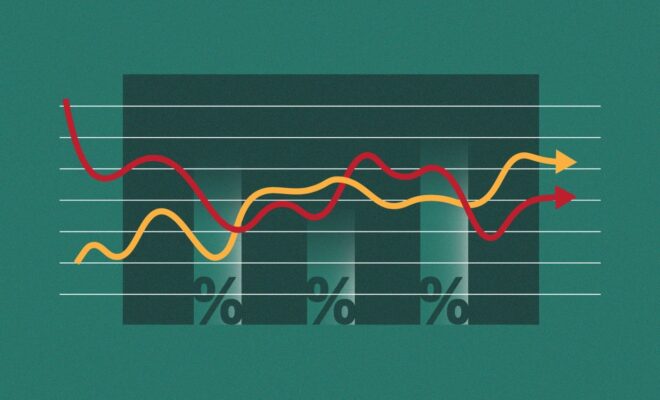Understanding Volatility

Volatility is a statistical measure that represents the degree to which the price of a security, such as a stock or bond, fluctuates over time. It is a critical concept in finance that helps investors understand the risk associated with any investment. Higher volatility means the value of the security can change dramatically over a short period in either direction, which indicates a higher risk. Conversely, lower volatility means the value does not fluctuate as drastically, denoting lower risk.
Measuring Volatility
The most common way to measure volatility is by looking at the standard deviation of the security’s historical returns. The standard deviation gives investors an idea of how much the return on the security deviates from the expected normal returns. Another popular metric is the Volatility Index (VIX), often referred to as the “fear index,” which measures the market’s expectation of volatility over the coming 30 days.
Factors Influencing Volatility
Several factors can contribute to the volatility of securities. These include:
- Economic Indicators: Reports such as GDP growth, employment rates, and inflation can affect investor sentiment and lead to price fluctuations.
- Political Events: Elections, regulatory changes, or geopolitical tensions can create uncertainty in the markets.
- Company Performance: Earnings reports, mergers and acquisitions, and changes in leadership can significantly impact a company’s stock price.
- Market Sentiment: Investor perception and their reactions to news or events drive market prices and volatility.
Tips for Dealing with Volatility
Dealing with volatility can be challenging, but there are strategies that investors can use to manage the risks:
- Diversification: Spread your investments across various asset classes, sectors, and geographies to mitigate the effect of volatility in any one area.
- Long-Term Perspective: Adopt a long-term approach to investing. Markets tend to smooth out fluctuations over extended periods.
- Dollar-Cost Averaging: Regularly invest a fixed amount regardless of the share price. This strategy can reduce the impact of volatility on purchase prices over time.
- Use Stop-Loss Orders: Protect your investments by setting stop-loss orders which automatically sell your holdings if they fall below certain prices.
- Stay Informed: Keep up-to-date with market trends and economic indicators to make informed decisions.
- Risk Assessment: Evaluate your tolerance for risk and adjust your investment portfolio accordingly.
- Contingency Planning: Have a prepared response for different market conditions, including volatile ones.
Conclusion
Volatility is an inherent part of investing and cannot be entirely avoided. However, understanding what it is, how it is measured, and the factors that influence it can better prepare you to deal with market ups and downs. By applying the tips provided, you can develop a strategy to navigate through volatile times and aim to protect your investments while seeking potential opportunities. Remember, effective management of volatility begins with education and a well-thought-out plan tailored to your investment objectives and risk tolerance.


